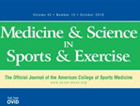Abstract and Introduction
Abstract
Objective This study aimed to determine the interaction between a high-fructose diet and PA levels on postprandial lipidemia and inflammation in normal-weight, recreationally active individuals.
Methods Twenty-two men and women (age, 21.2 ± 0.6 yr; body mass index, 22.5 ± 0.6 kg·m−2) consumed an additional 75 g of fructose for 14 d on two separate occasions: high physical activity (PA) (approximately 12,500 steps per day) (FR+active) and low PA (approximately 4500 steps per day) (FR+inactive). A fructose-rich test meal was given before and at the end of each intervention. Blood was sampled at baseline and for 6 h after the meal for triglycerides (TG), VLDL, total cholesterol, glucose, insulin, tumor necrosis factor-α, interleukin 6, and C-reactive protein.
Results Log-transformed TG area under the curve (AUC) significantly increased from before (10.1 ± 0.1 mg·dL−1 × min for 6 h) to after (10.3 ± 0.08 mg·dL−1 × min for 6 h, P = 0.04) the FR+inactive intervention, with an 88% increase in Δpeak TG (P = 0.009) and an 84% increase in Δpeak VLDL (P = 0.002). ΔPeak interleukin 6 also increased by 116% after the FR+inactive intervention (P = 0.009). Insulin total AUC significantly decreased after FR+active intervention (P = 0.04), with no change in AUC after the FR+inactive intervention. No changes were observed in glucose, tumor necrosis factor-α, and C-reactive protein concentrations (P > 0.05).
Conclusions Low PA during a period of high fructose intake augments fructose-induced postprandial lipidemia and inflammation, whereas high PA minimizes these fructose-induced metabolic disturbances. Even within a young healthy population, maintenance of high PA (>12,500 steps per day) decreases susceptibility to cardiovascular risk factors associated with elevated fructose consumption.
Introduction
There is a growing body of evidence that a high dietary intake of fructose is associated with the development of metabolic risk factors including insulin resistance,[5] fatty liver,[24] hyperlipidemia,[2,22,23] hypertension,[6] and reduced lipid oxidation.[1] Specifically, a study by Stanhope et al.[32] demonstrated that an ad libitum diet consisting of 25% of calories from fructose induced hepatic insulin resistance, increased de novo lipogenesis (DNL), and increased visceral adiposity in obese adults within only 10 wk.
The proposed metabolic dysregulation associated with high fructose consumption relates to the unique metabolism of fructose. Fructose is almost exclusively phosphorylated to fructose-1-phosphate in an adenosine triphosphate-dependent process catalyzed by fructokinase in hepatic cells. This results in a rapid and relatively unregulated production of triose phosphates, which may subsequently be converted to pyruvate for conversion to lactate or acetyl coenzyme A.[33] Large concentrations of acetyl coenzyme A can stimulate hepatic DNL and simultaneously inhibit hepatic lipid oxidation, resulting in fatty acid reesterification and VLDL triglyceride (TG) synthesis.[30] The consequence of the elevation in VLDL TG synthesis is an increased supply of TG to the adipose tissue and ectopic tissues such as muscles and the liver, increasing the size of TG depots. This leads to impaired insulin signaling, dyslipidemia, and low-grade inflammation.[11]
Despite the mounting evidence demonstrating adverse adaptations to a high-fructose diet, these studies often use unrealistically high levels of fructose, some in excess of 25% of total energy intake,[1,32] which may not be clinically relevant. Specifically, Stanhope et al.[32] used an additional 25% of a fructose drink to an ad libitum diet. Moreover, research from Abdel-Sayed et al.[1] used an additional 234 g fructose·d−1 for 7 d on healthy young males. Both of these aforementioned studies are well above the average intake of approximately 70 g of added sugar in the form of fructose. Moreover, there are no studies to date researching the metabolic effects of increased physical activity (PA) during a high-fructose diet. PA is a lifestyle modification often implemented to decrease risk factors associated with metabolic syndrome and may be a clinically relevant tool to use to combat the deleterious effects of a high-fructose diet. A previous review by Bassuk and Manson[4] determined through various epidemiological studies that physically active individuals are at 30%–50% lower risk of developing type 2 diabetes and heart disease because of a possible reduction in body weight, insulin resistance, hypertension,[25] athrogenic dyslipidemia, and inflammation, all previously mentioned risk factors of a high-fructose diet. Hence, public health initiatives should focus on increased PA in conjunction with a diet low in fructose to attenuate metabolic syndrome risk factors.
Moreover, physical inactivity is associated with low-grade inflammation, as evidenced by increased concentrations of proinflammatory markers such as monocyte chemoattractant protein 1 and interleukin 6 (IL-6).[14] Because fructose consumption is independently associated with increased low-grade inflammatory markers[9] and increased rates of DNL,[1,6,23,24,32] we expect previously reported deleterious health outcomes from chronic fructose consumption to be confounded by physical inactivity.
Our aim was to test the hypothesis that a diet rich in fructose would increase postprandial lipidemia to a greater extent when coupled with physical inactivity, independent of energy intake. Secondly, our aim was to test the hypothesis that after ingesting a high-fructose diet for 2 wk, proinflammatory markers associated with elevated lipid production would be elevated and these effects would be ameliorated with high PA.
Med Sci Sports Exerc. 2014;46(11):2091-2098. © 2014 American College of Sports Medicine







